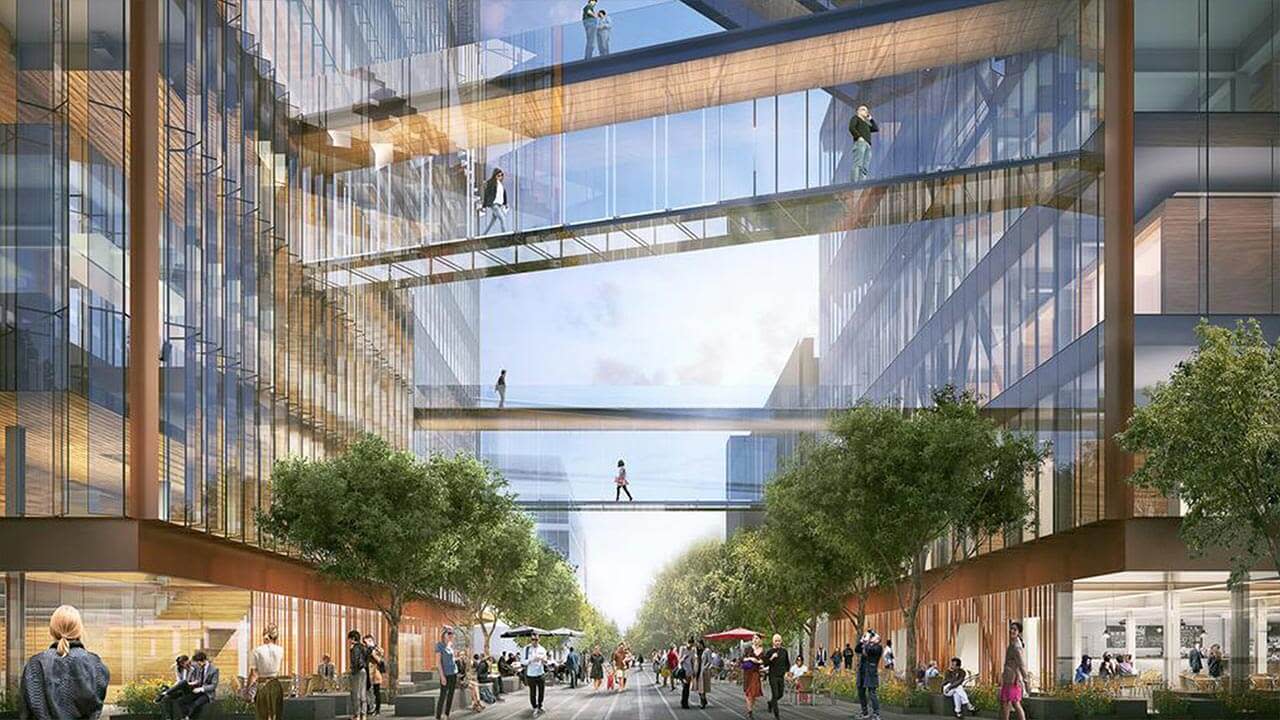Customer Story
Streamlining design coordination for faster issue resolution
Truebeck integrates Procore to align teams, automatically track coordination issues, and improve project efficiency and predictability

The Challenge
Prior to Procore Design Coordination, Truebeck faced many BIM coordination challenges including–but not limited to–tracking open items and open clashes, exporting reports, and identifying whose court items were in, and how long they’d been open. There was no single source of truth to view coordination issues across the VDC, design, operations, and field teams. When issues came up, they were not addressed until the weekly coordination meeting–resulting in lengthy discussions and delayed progress.

The Solution
In order to better align their VDC, operations, design, and field teams, Truebeck implemented the Coordination Issues tool into their existing Navisworks workflows. Now the team could continue to run clash reports and create issues in their familiar Navisworks® interface, but then track, prioritize, and manage those coordination issues with Procore so the entire project team could collaborate to solve issues in real time. With a centralized hub to synthesize coordination issues for all teams, Truebeck was able to leverage their teams’ collective experience to solve issues prior to construction–– improving project performance and predictability.

The Results
- Automated workflows removed manual tasks to eliminate double entries
- Elevate-to-RFI saved 5-10 minutes per RFI
- Actionable data kept trades on top of resolving clashes, increasing accountability
“It speaks volumes for anybody who’s done coordination––to be able to export a report very quickly, including snapshots, locations, and who is responsible for each item. It drastically reduces follow up time. Not to mention all the data analytics behind due dates and whose court items are in and when things are reassigned and what’s elevated to an RFI so you can quickly see the status of what’s truly open versus has been addressed versus it’s in the architect’s court.”
Justin Porter
Construction Technology and Innovation Director
Truebeck Construction
Work Smarter. Not Harder.
Justin Porter, Construction Technology and Innovation (CTI) Director at Truebeck Construction remembers his first project over nine years ago when something like Design Coordination didn’t exist. He states, "We would literally take screenshots of every issue and write down in the meeting minutes who was responsible, when it was due, and what RFI it was associated with. It was an extremely manual process to track all of that and it took countless hours."
He continues, "It was definitely doubling efforts because we were saving Viewpoints in Navisworks® and then having to go through each of those and manually write comments. If you didn’t write comments, you didn’t know how long it had been open. Nothing was tracked from a date and productivity standpoint."
After implementing Procore Design Coordination, Truebeck’s coordination issue process is not only faster but more strategic. "It’s definitely made things more streamlined and more efficient. Design Coordination puts everything in one system of record...Now we can track the productivity of trades–– the average time spent addressing clashes and whether or not they are addressing them every week like they’re supposed to." says Porter.
A Solution for Everyone
By aligning their VDC, design, operations, and field teams, Truebeck was able to effectively collaborate and solve coordination issues as they came up––versus waiting for their weekly coordination meeting.
Design Coordination allows teams to continue working in software environments they are comfortable with. VDC teams are able to continue working within their familiar Navisworks® interface and project team members, like Project Executives or Superintendents, to understand how coordination is progressing without having to open the model.
Porter speaks to the ease of use for both teams. "The tool is extremely easy to implement and utilize on any project. I think it took me a total of 10 minutes to show someone new how to install and use the tool to its full potential. It’s incredibly easy to use and intuitive and teams should have no issue implementing on their projects." Similarly, the trades can just as easily jump in and mark items as ready for review instead of combing through their email to view screenshots and having to ask, ‘Where’s that location, on which gridline?’ It’s now more like, ‘Hey, I just created an issue for you. Jump in the model and you can go see what I’m talking about," says Porter.
Performing Real-time Triage on Coordination Issues
The whole purpose of the coordination process is to validate the design so that you know that it’s constructable. Now as VDC teams uncover challenges and conflicts in real time, they can immediately elevate them to RFIs in Procore. And once they’re elevated, Procore automatically changes the status, letting the Operations team know they’re blocked. It even provides them with a hyperlink to that RFI so they have complete transparency into those blocking changes and can track it throughout the RFI workflow. As soon as the design team, operations team, and owner review this RFI and provide their response and mark it as official, the status again changes automatically to released so the VDC teams can take action immediately and solve more issues.
Porter comments on the efficiencies gained from this new coordination workflow. "Previously, it would be a time-consuming process to save viewpoints, take screenshots, mark up the item in question, write the question, propose a solution, and create a new RFI. The ‘Elevate to RFI’ functionality is awesome! It saves an incredible amount of time to simply elevate an RFI within the same platform, quickly view the status of items, and the issues are hyperlinked directly to the RFI in Procore. This removes the manual effort that would be needed to create an RFI without this tool. About 5-10 minutes per RFI is saved for not having to retake those screenshots. Spending less time doing administrative statusing allows us to spend more time in the field, working out design issues, instead of behind a desk," says Porter.
Leveraging Data to Improve Project Performance and Predictability
Design Coordination not only aligned teams to better approach the coordination process, but furthermore, provided data trends that empowered better project planning. Porter explains that before having Coordination Issues, he manually tracked all open issues via Viewpoint and folders. Now, all coordination items are tied to a system of record where he is able to run reports instantaneously and quickly view the status of any item within seconds such as location, responsible assignee, due date, etc. In addition to utilizing the out-of-thebox dashboards, Porter connects Procore’s API to PowerBI to develop extensive reports to make the coordination process even more seamless and efficient. Having data consolidation helps present a unified view of the health of the project so management can drive down costs and produce safer jobsites.
Porter states, "All the data that it’s capturing is why we love it––because we can pull all of that information into Power BI and track literally everything...All the data analytics that you would need to support coordination and track, ‘Hey, guys, why are we still in Week 7 when we should have been done in 3 weeks?’ You now have all that data to support it."
He continues, "It speaks volumes for anybody who’s done coordination––to be able to export a report very quickly, including snapshots, locations, and who is responsible for each item. It drastically reduces follow up time. Not to mention all the data analytics behind due dates and whose court items are in and when things are reassigned and what’s elevated to an RFI so you can quickly see the status of what’s truly open versus has been addressed versus it’s in the architect’s court. All of that can be seen within minutes, versus in the past, you had to manually do all of that. To me, that’s a no brainer."





